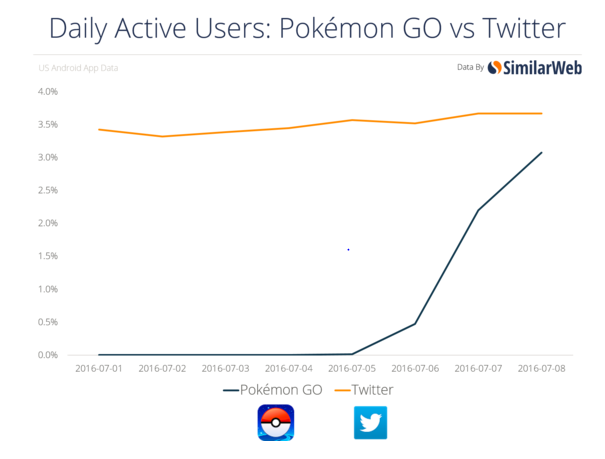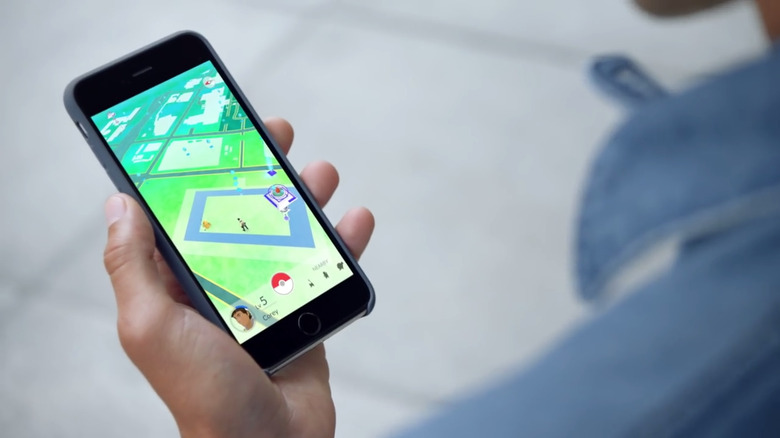Why Pokemon Go Is An Even Bigger Game-Changer Than You Think
Nintendo finally allowed a mobile game version of one of its biggest money-spinners to be made. And you have been hearing about it a lot over the past 48 hours. Possibly too much. But one thing that has not been widely discussed is the truly monstrous revenue performance that Pokemon GO has delivered right out of the gate. This app is a beast of truly exotic and unprecedented nature. It has delivered the hottest first 72-hour revenue performance in US mobile content history.
We are witnessing a decisive turning point in the mobile content industry.
MUST READ: iPhone 7: Seriously, this phone sounds boring to you?
On Monday morning, traders in Tokyo were trying to get a grip on this seismic change, bidding Nintendo's share price up 24% in the first hour of trading — after a 9% jump on Friday. That meant adding more than $8 billion to the company's market cap.
For comparison, let's look at the most popular and lucrative mobile puzzle game of all time, Candy Crush Saga, which bewitched most of the globe in 2013. This game was an out of the gate sensation — it hit Number 75 on US iPhone chart on launch day and soared to Number 7 the next day. That was the peak download performance in its first month out. Strongly monetizing apps don't usually hit the top of downloads charts because they are optimized to appeal to a limited number of heavy spenders, not the general population. The sales performance of "Candy Crush" was indeed terrific. It hit Number 34 on US iPhone sales chart just six days after release — and Number 10 in under three weeks.
For years, this has been the gold standard in the mobile app business. In the olden times, paid apps like "Angry Birds Space" would hit Number 1 on the sales chart on launch day. But as free apps began dominating the industry around 2013, the time it took to enter even the Top 10 in sales stretched to weeks or months. Free apps in Western markets are structured in a way that entices consumers to begin paying for in-app purchases only after an extended period of play.
But Pokemon GO is a free app — and yet it hit Number 1 on US iPhone sales after precisely 13 hours. It was also an instant Number 1 in downloads, competing against some of the highest-grossing apps ever.

Among Android users, Pokemon Go threatens to eclipse Twitter by Tuesday on daily active user basis
This kind of phenomenon has never been witnessed by the mobile content industry. In the Japanese app market, consumers tend to pay three times as much for in-app purchases than in the US market. The monetization strategy many Japanese apps utilize is far more aggressive than with US blockbusters, pressing consumers to spend money far sooner than Western consumers are willing to. Pokemon GO uses this Japanese approach of offering meager free resources to consumers right at the start, in a bid to force them to spend money on Day 1.
This isn't supposed to work with American consumers. But suddenly, it is.
What all this actually means will be a topic of hot debate within leading mobile app vendors around the globe in coming weeks. Is the incredible sales success of Pokemon GO rooted specifically in the popularity of the Pokemon franchise? Dozens of famous game, TV and movie franchises have spawned mobile apps in recent years; none have come even close to this type of frenzy.
Is this an example of how a location-based collectible game can tap into wallets of consumers in a completely novel way? Many mobile games have had location-based features since 2011, when Shadow Cities made a substantial media splash without ever generating meaningful revenue. But this is the first time when a location-based game has tapped into both collection addiction and nostalgia over a massively popular Nintendo game franchise. Perhaps it's that rare combination that was required for a bonanza of this scale?
Whatever the precise formula for the instant madness spawned by Pokemon GO is, it will force a profound rethink of many industry tropes. Some games with animal collection mechanisms have been fairly successful in recent years, including a cluster of dragon- and monster-raising apps bopping in and out of Top 100 sales rankings. But none of these have come close to the money-making prowess of strategy games like Mobile Strike, Game of War and Clash of Clans. Most serious game vendors have focused on replicating either the war game success of those titles or the match-three magic of Candy Crush.
Both animal collection and location-based games have been viewed as cute niches without much potential for cracking the Top 10 revenue chart. Yet right now, Pokemon Go is topping a $70 million monthly run rate in the US alone.
The insane success of Pokemon GO has challenged conventional wisdom completely. Are location-based features far more potent money-making tools than anyone has realized? Could Eighties and Nineties nostalgia items be recycled a lot more effectively than they have been thus far? Should Nintendo immediately ditch all of its console plans and put all its core franchises on the iOS platform?
The answer to the last question is quite likely a resounding yes. Once Pokemon GO launches in markets other than the US, Australia and New Zealand, it will quite likely become a $1 billion annual behemoth. With moderately professional updates and expansions, it can stay at that level for at least 3-5 years. There is no reason why Animal Crossing, Zelda and Mario wouldn't be able to replicate this success — particularly since location-based features fit all three naturally. It is quite possible that Castlevania, Wario mini-games, Advance Wars and other Nintendo properties could easily gross $300+ million annually. Nintendo has now seen just how fantastically profitable its back catalogue can be. The app industry has witnessed how much money location-based and collectible-oriented titles can gross.
This turn of events is a real blessing for both consumers and vendors. The eerily stagnancy mobile game market since 2013 has been its defining feature as an endless parade of Candy Crush and Clash of Clans clones has rolled out. By next Christmas, we will see a wholesale reorientation of the mobile game business. Nothing will ever be the same.
